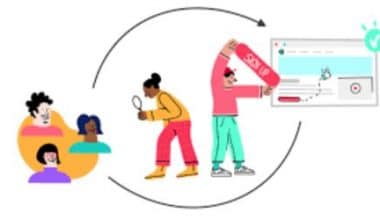The Internet of Things market may grow as we use it in more facets of our daily life. Professionals in this field use their specialized knowledge to create technological innovations that simplify the exchange of information between devices and Internet databases. Finding out more about the talents required in this job may help you determine if it’s the appropriate one for you. Consequently, this post will give you details about what is an IoT device, its applications, its technology, and its management.
What Is the Internet of Things
The network of physical objects or “things” that are integrated with sensors, software, and other technologies for the purpose of communicating and sharing data with other devices and systems over the Internet is referred to as the Internet of Things (IoT). These gadgets include anything from common domestic items to high-tech industrial gear. Today, there are more than 7 billion connected IoT devices, and according to analysts, there will be 10 billion by 2020 and 22 billion by 2025. Device partners are part of Oracle’s network.
Why is the Internet of Things So Important?
IoT has emerged in recent years as one of the most significant 21st-century technologies. Embedded gadgets in domestic appliances, cars, thermostats, and baby monitors provide continuous communication between people, processes, and things.
Low-cost computers, the cloud, big data, analytics, and mobile technologies let physical devices share and collect data without human interaction. Digital systems can record, monitor, and modify every interaction between connected entities in today’s hyper-connected environment. The physical and digital worlds collide, but they work together.
What Is IoT Device
IoT devices, which include the numerous devices on the Internet of Things (IoT), are nonstandard computing devices that connect wirelessly to a network and have the capacity to communicate data.
IoT entails expanding internet connectivity to a variety of conventionally “dumb” or non-internet-enabled physical items and daily things in addition to regular devices like desktops, laptops, smartphones, and tablets. These gadgets may connect and communicate online since they are technologically embedded. They can also be watched over and managed from a distance.
What is An Example of An IoT Device?
Connected gadgets communicate with each other to automate home and office tasks. They are able to transmit useful sensor data to consumers, companies, and other intended recipients. The gadgets can be divided into three primary categories: industrial, commercial, and consumer. Smart TVs, smart speakers, toys, wearables, and smart appliances are examples of consumer-oriented linked products.
How Do IoT Devices Work?
Although IoT devices’ functionalities differ, they have several common working principles. IoT hardware is made to interact in some way with the physical world; this is the first point to make. The gadget may be an intelligent security camera or a sensor on an assembly line. The device is detecting what is occurring in the real world in both scenarios. Many IoT devices are configured and maintained by a software program, though this is not always necessary. However, some gadgets come with built-in web servers, which negates the requirement for an external program.
Most of an IoT device’s traffic goes outgoing once it has been configured and started working. For instance, a security camera broadcasts video data. An industrial sensor feeds sensor data similarly. However, some IoT gadgets, like smart lights, do receive inputs.
What Is IoT Device Management
IoT Device Management describes procedures for registering, configuring, and provisioning connected devices as well as for maintaining and monitoring them. For instance, all of the major cloud service providers, such as Azure IoT Hub, AWS IoT, or Google Cloud IoT, offer services for IoT device management. This solution provider can authenticate, provision, control, configure, maintain, and monitor IoT devices thanks to their device management products.
What is IoT Device Management Implementation?
Security, interoperability, power/processing capability, scalability, and availability can hinder the installation of an IoT system and its components. Many of these issues can be solved with IoT device management, either by using industry-standard protocols or by leveraging vendor services.
Device management, which provides capabilities essential to preserving the health, connectivity, and security of IoT devices across their full lifecycles, assists businesses in integrating, organizing, monitoring, and remotely managing internet-enabled devices at scale.
Tech Stack Required for Managing IoT Devices
#1. Cloud Platforms,
Your IoT application’s foundation is the Cloud Platform. The cloud will receive data streams from your IoT devices. You can choose from a variety of cloud platforms for the Internet of Things solutions on the market, but you must pick the one that best suits your data needs.
#2. Internet of Things Devices and Connected Physical Objects
Transducers like actuators, sensors, and other smart, connected, and intelligent things are examples of IoT devices. Thousands of sensors that recognize and react to the environment can be present in a connected object. Sensors output useful data, which they then share with other linked systems.
#3. Communication Methods for Internet of Things Data Transmission
IoT links a number of gadgets to a network that transmits data and exchanges information, enabling communication between machines and people. In the Internet of Things, connectivity is vital. There are many ways to connect Internet of Things devices to a network, including wireless and cable connections.
When launching the Internet of Things, businesses must choose the optimal communication channel. The ideal communication method depends on range, power consumption, and speed.
You can benefit in many ways by managing a device by installing it on IoT device management platforms. As an illustration, AWS IoT offers a range of services for a variety of uses, such as device security, remote management, data analytics, and more. Let’s explore some of the benefits of adopting IoT device management systems to manage IoT devices.
What Is IoT Technology
The variety of hardware, software, and protocols that make up the Internet of Things ecosystem is included in IoT technology. This comprises technology for data storage, processing, analysis, and security, as well as sensors, actuators, and communication protocols. The Internet of Things relies on the integration of numerous types of technologies to make IoT devices work. Additionally, dozens or even thousands of different devices are frequently connected to IoT devices.
In other words, Internet of Things technologies is a collection of tools that support and power IoT networks and devices, including sensors, actuators, communication protocols, data storage, processing, and security technologies. In the sections below, we look at the various IoT technology categories and how they fit into both current and upcoming IoT applications.
#1. IoT Actuator Technology
Actuators allow Internet of Things devices to physically respond to signals or data that they measure or receive. In the Internet of Things devices, common types of actuators include:
- Solenoid: These electromechanical devices generate mechanical force using a magnetic field. Switches and valves are frequently controlled by solenoids.
- Motor: Internet of Things devices frequently use motors to power wheels, gears, or mechanical arms.
- Piezoelectric Actuator: Pump and valve upstream controllers use piezoelectric actuators to convert mechanical stress to an electrical output (or vice versa).
- Pneumatic and hydraulic actuators use pressurized air or hydraulic fluids to power robotic arms and legs in the Internet of Things devices.
#2. Signal and Data Processing in the Internet of Things
IoT technology depends on signal and data processing because it enables IoT systems to analyze data from sensors and other sources. In particular, signal processing algorithms analyze incoming sensor data using mathematical models, which improves the performance of IoT devices. Digital signal processors (DSPs), field programmable gate arrays (FPGAs), always-on embedded computers, and neural networks are examples of IoT signal processing technology. In contrast to manual review methods, signal and data processing enables Internet of Things systems to recognize anomalies or outliers so that they can be addressed more quickly.
#3. Machine Learning (ML) Technology in the Internet of Things
Algorithms can now recognize patterns from massive volumes of data without having to be explicitly coded thanks to machine learning (ML). In order to get insights from the enormous amounts of data created by IoT devices and sensor networks, the Internet of Things technologies uses machine learning capabilities, enabling more effective operations. In addition, by offering in-the-moment insights based on the data created by their connected devices, IoT machine-learning technology can assist businesses in making wiser decisions.
#4. Artificial Intelligence (AI) Technology in the Internet of Things
Internet of Things (IoT) devices frequently use artificial intelligence (AI), a technology that enables them to function without human input. Artificial intelligence can be used to automate procedures rather than depending on people to input data or operate Internet of Things devices.
IoT Applications
The number of IoT applications will increase as technology advances in the next years. IoT and AI are anticipated to be combined in the near future to provide intelligent solutions for all current technological problems. Here, we present significant instances of real-world IoT applications!
#1. Smart City
The term “smart city” or “City of the Future” refers to a prominent Internet of Things application concept that categorizes technology as being responsible for upgrading urban infrastructure to make urban centers more effective, less expensive, and better to live in. Planning and public administration are addressed by the “Smart City” idea through the automation of services in an innovative and sustainable manner. Government services, transportation and traffic management, electricity, healthcare, water, creative urban agriculture, and waste management are just a few of the industries that smart cities enhance and modernize.
#2. Smart Home
The most popular IoT application on this list is smart houses. Smart houses have intricate, sophisticated security systems that help to ensure home security and safety while controlling household appliances like lights, alarms, and water flow from faucets. Through their smartphones, tablets, and computers, homeowners can monitor and control home operations in smart homes. If you have forgotten to switch off your oven, you might be able to do so easily using your phone.
#3. Smart Self-Driving Cars
Previously considered to be a thing of the future, self-driving and functioning cars are now a reality. You can utilize smart car technology to manage some features on your smartphone. To assess the engine oil level, radiator water temperature, etc., central computers placed in the automobile collect data from sensors located throughout the vehicle. Through a phone app, you can even keep tabs on the condition of the vehicle, including its position, oil levels, petrol, and other factors.
#4. Internet of Things in Farming
Farmers have the opportunity to change the agricultural business by using sophisticated Internet of Things farming applications to optimize several labor-intensive farm processes. You can use the Internet of Things to develop soil-chemistry-based fertilizer profiles, monitor soil nutrient and moisture concentrations, and assist you choose the optimal time to harvest crops.
In order to track the health of cattle, a number of sensors are deployed across the agricultural sector in “smart farming.”
#5. Fitness Trackers
You can track your progress and optimize your fitness objectives with the Internet of Things-connected products. Fitness trackers keep tabs on a variety of daily activities, including sleeping habits, heart rate, movement patterns, workout data, calories burnt, and more. These gadgets perform all of this using sensors that gather information from your skin.
#6. Smart Grid
The IoT that takes care of energy systems is known as the smart grid. Utility firms employ smart grid technologies to identify energy savings by tracking energy use, forecasting energy shortages and power outages, and gathering information on how diverse people and businesses use energy. The average person can monitor their own energy use and identify efficiencies in their home by using the smart grid’s data.
What Is an Example of an Internet of Things?
You may have personal experience with IoT-enabled items such as dishwashers, refrigerators, smart TVs, smart watches, vehicles and trucks, heating and cooling systems, fitness equipment, and trackers.
What are 4 Types of Internet of Things
The 4 Different Internet of Things Platform Types:
- Internet of Things Connectivity Platforms.
- Internet of Things Device Management Platforms. …
- Internet of Things Application Enablement Platforms. …
- Internet of Things Analytics Platforms.
What Is the Difference Between the Internet of Things and the Web of Things?
The layer at which each creates device connectivity is the primary distinction between IoT and WoT. IoT here just addresses the network layer between the devices.
Is Alexa an Internet of Things?
Digital personal assistants like Alexa, Siri, and Cortana are examples of Internet of Things gadgets.
Related Posts
- BEST BUSINESS TO START WITH 10K: The Top 20 (+ free guide)
- CYBER SECURITY CAREER: Meaning, Types, Course & Salary
- IOTA: A Blockchain for IoT Applications with Zero Fees
- Product Lifecycle Management PLM: Detailed Guide to the PLM System






